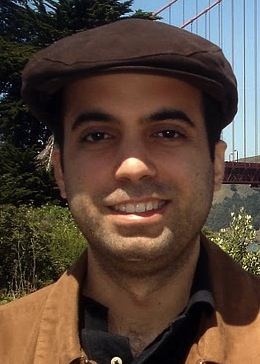 The following is a special contribution to this blog from Mario Bergés, an assistant professor in the department of civil and environmental engineering at Carnegie Mellon University. Mario recently co-organized the first International Workshop on Non-Intrusive Load Monitoring. (This post originally appeared here.)
The following is a special contribution to this blog from Mario Bergés, an assistant professor in the department of civil and environmental engineering at Carnegie Mellon University. Mario recently co-organized the first International Workshop on Non-Intrusive Load Monitoring. (This post originally appeared here.)
Last Monday, May 7th, the 1st International Non-Intrusive Load Monitoring (NILM) Workshop took place on the campus of Carnegie Mellon University. Zico Kolter and I had been organizing this event for the past few months, in an attempt to bring together the community of researchers and industry practitioners who are working on electricity disaggregation. By all measures, the resulting event exceeded our expectations. We had a great turnout (60 participants) and a very interesting lineup of speakers and talks.
The paragraphs below are a summary of what happened during the event, so if you attended or are simply interested in getting access to the slides and papers here are some useful links:
- Most of the extended abstracts have been posted online, along with posters and slide decks for the presentations.
- We have also published a few photos of the event here.
Non-intrusive load monitoring (NILM) refers to methods that attempt to discern detailed information about the appliances in a home, but without metering each appliance individually. Current energy bills offer very limited information about how a consumer might curb their electricity consumption, and bills that catalogue energy down to the appliance level have typically required costly and invasive monitors throughout the home. NILM algorithms, in contrast, offer a computational approach that can provide the same information as these detailed monitors, but by exploiting the existing infrastructure of whole-home meters. The methods look for patterns in power consumption that are indicative of certain devices, and use this to predict how much power each device consumes, using a whole-home reading alone. Research in NILM dates back to George Hart’s work at MIT in the late ’80s and ’90s, but recent interest in appliance efficiency, smart meters, and the smart grid has led to renewed interest in the subject and new hardware and algorithmic developments.
The event was kicked off by Prof. James H. Garrett, Jr., the head of the Civil and Environmental Engineering Department at CMU, during a lunch session. Zico and I then presented our view on the history and current state of NILM research, to set the stage for the rest of the talks. Our presentation can be found here.
Following this, we had a session on event-based approaches to NILM. The main talk for this session was by Michael Zeifman, from the Fraunhofer Center for Sustainable Energy Systems (CSE), and followed by short talks by researchers at CMU, Samsung and the iHomeLab in Switzerland. The second session of the day was on high-frequency approaches, which notably include the work of Shwetak Patel and his team at the University of Washington. For that session we had Sidhant Gupta from UWa as the main speaker, followed by a talk from Kevin Ashton, the general manager at Belkin International, and Hampden Kuhns from LoadIQ. Zico Kolter led the next session on non event-based approaches, followed by Oliver Parson from U. of Southampton in the UK (who also happens to have a blog on this topic).
The last session was focused on issues that go beyond algorithms for solving the problem. Industry participants from PlotWatt, Verlitics/Emme and Bidgely presented their perspectives on the problems that they have faced when trying to deploy the technology commercially. Then we had two presentations (from NREL and CMU) to showcase some academic perspectives on things to consider beyond algorithms.
We then had a brief informal discussion between all the participants and some speakers in an attempt to define two things: (a) future directions for standardizing the evaluation of NILM systems, and (b) the possible future of the workshop. The conversation around these two topics was not as in-depth as some of us would have liked, but nevertheless some interesting points were brought up. For instance, Krish Gomatom from the Electric Power Research Institute (ERPI) revealed that his team is in the process of initiating a set of pilot experiments to evaluate NILM technologies this year. His slides are available here. We also learned from Stephan Tomek that the International Energy Agency (IEA), through its 4E project is embarked on a scoping study to evaluate the potential of NILM technologies.
Regarding the future of the workshop, based on the interest shown by the participants and the realization of how large the community really is, I think that it is fair to say that there will likely be another workshop in the future. Whether it is twelve, eighteen or twenty four months into the future, I am not sure. It was very nice to see so many different researchers and practitioners come together. As I mentioned on a previous post, NILM research is alive and well in 2012, almost thirty years after its conception.

![Participants at the 2012 NILM Workshop [image courtesy Mario Bergés]. Participants at the 2012 NILM Workshop [image courtesy Mario Bergés].](https://cccblog.org/wp-content/uploads/2012/05/7166715526_37cb272fb0_z.jpeg)








